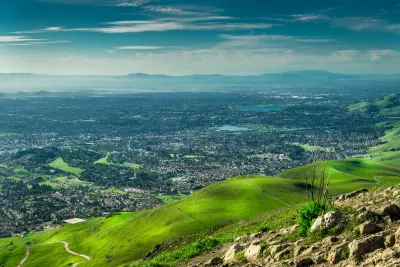Like other technologies, artificial intelligence tech seems to be clustering in a small group of cities, prompting questions about its uneven deployment.

Artificial intelligence, writes Richard Florida, "is predicted to have substantial economic impacts, adding as much as $15.7 trillion to global economic output by 2030." According to "a new Brookings Metro study that digs into the geography of AI at the metro level," AI "threatens to reinforce or magnify the same geographically uneven patterns of previous high-technology industries that are concentrated in leading tech hubs and superstar cities across the U.S."
The study finds that "just 10% of U.S. metropolitan areas — 36 of them — have a significant AI presence." The San Francisco Bay Area is "far and away the lone U.S. leader in AI." Thirteen other metro areas have "significant AI clusters, which the study calls early adopters." The study names "21 additional metro areas that have substantial research capability but limited commercialization," and a fourth group comprised of "87 metro areas that the study dubs 'potential adoption centers' with more moderate levels of AI activity." Beyond that, "the study finds very little, if any, significant AI capability in the lion’s share of U.S. metro areas, a staggering 260 of them in all."
In a hopeful sign, "[s]everal metro areas saw significant increases in AI-related job postings in 2020, while the Bay Area saw a slight decline. It may well be the case that geographic shifts in AI technology, jobs or startups may not show up in data for several years." But for now, AI's growth mirrors that of other technologies, where "new technologies and industries grow up around a small number of dominant tech hubs."
According to Florida, "[f]ederal intervention will likely be required to counter and reshape the powerful trends at work in the geography of artificial intelligence." Otherwise, "[l]eft to its own devices, AI is just the latest technology that will serve to reinforce and exacerbate the winner-take-all nature of our economy and geography."
FULL STORY: What the AI Economy Means for Cities

National Parks Layoffs Will Cause Communities to Lose Billions
Thousands of essential park workers were laid off this week, just before the busy spring break season.

Retro-silient?: America’s First “Eco-burb,” The Woodlands Turns 50
A master-planned community north of Houston offers lessons on green infrastructure and resilient design, but falls short of its founder’s lofty affordability and walkability goals.

Delivering for America Plan Will Downgrade Mail Service in at Least 49.5 Percent of Zip Codes
Republican and Democrat lawmakers criticize the plan for its disproportionate negative impact on rural communities.

Test News Post 1
This is a summary

Test News Headline 46
Test for the image on the front page.

Balancing Bombs and Butterflies: How the National Guard Protects a Rare Species
The National Guard at Fort Indiantown Gap uses GIS technology and land management strategies to balance military training with conservation efforts, ensuring the survival of the rare eastern regal fritillary butterfly.
Urban Design for Planners 1: Software Tools
This six-course series explores essential urban design concepts using open source software and equips planners with the tools they need to participate fully in the urban design process.
Planning for Universal Design
Learn the tools for implementing Universal Design in planning regulations.
EMC Planning Group, Inc.
Planetizen
Planetizen
Mpact (formerly Rail~Volution)
Great Falls Development Authority, Inc.
HUDs Office of Policy Development and Research
NYU Wagner Graduate School of Public Service





























